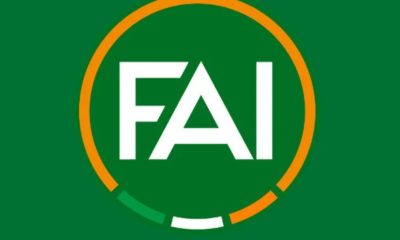Featured
Handy Gardening Tips For June
- Share
- Tweet /home/eastcork/public_html/wdir/wp-content/plugins/mvp-social-buttons/mvp-social-buttons.php on line 68
https://www.cobhedition.com/wdir/wp-content/uploads/2010/01/anto31.jpg&description=Handy Gardening Tips For June', 'pinterestShare', 'width=750,height=350'); return false;" title="Pin This Post">
Flowers:
- Heavy rains encourage slug problems. Check for slugs during rainy periods and hand pick the pests.
- For hanging baskets in cool, shady locations, use tuberous begonias, ferns, impatiens or fibrous rooted begonias in combination with trailing plants, such as English ivy.
- Remove old flower heads from annual bedding plants to keep them blooming.
- Disbud chrysanthemum flowers to secure large, beautiful blooms on straight, strong stems. To disbud, remove the small side buds along the stems which form in the angles of the leaves. This will allow all of the food reserves to be used for one large flower rather than many smaller ones.
- Plant annual flowers in tubs or large containers for the porch or terrace. Make sure there are holes in the container’s bottom to provide good drainage.
- Remove foliage from spring bulbs after it turns yellow and begins to dry. Set out bedding plants to cover the bare spots using care not to damage the bulbs.
- The best time to harvest most herbs is just before flowering, when the leaves contain the maximum essential oils.
- Pick the faded flowers off fuchsia as they start to wilt. This will force more blooms. Control aphids by washing with water hose.
- Feed roses with a complete fertilizer in June. Weed well. Remove faded blooms and sucker shoots as they come. Watch for aphids, mildew and blackspot.
- Dig up and divide over crowded clumps of Primroses after bloom. Keep them well watered after planting.
- Water container plants daily, as needed. Feed every two weeks.
- Perennial flowers for next year can be seeded at the end of June.
Lawns:
- Deep water lawns, trees and shrubs to encourage deep rooting and avoid heat stress.
- Do not start new lawn from seed now. The young grass will not survive the summer heat.
- If you have a new lawn you can add another application of seed, six months later to increase the turf density.
- Watch out for yellow patches, leaf curl or poor growth. Increase watering if you notice any of these signs.
- Install new edging around borders and beds and check existing edging after storms. Don’t install edging after long periods of rain because the ground will swell and once it dries the edging will move.
- Water lawns regularily. Set your lawnmower at a higher lever. Longer grass will shade the roots from heat. Don’t forget to save your clippings for the compost pile. Never add your cuttings after a weed treatment.
Veg:
- Harvest your lettuce, peas, carrots, radishes and onions now. Plant another quick maturing vegetable or plant more of these varieties for continuous growth.
- Continue to thin out your lettuce plants. They should be about a foot apart.
- Lift early potatoes now. To avoid damaging them use a fork.
- If you want best results, this is the last month to plant your warm – season vegetables. (eggplant, pepper, squash, tomato and beans.)
- Pinch the tips of your broad beans off to prevent aphids.
- Transplant brussels sprouts into the garden now. Plant approximately 3 feet apart.
-

 Announcements2 weeks ago
Announcements2 weeks agoJOB OPPORTUNITIES Watersedge Hotel are currently hiring for the following positions
-

 Local News2 weeks ago
Local News2 weeks agoLandmark Partnership: Cruise Ireland and Cruise Britain Join Forces to Boost Cruise Tourism
-

 Events & Entertainment2 weeks ago
Events & Entertainment2 weeks agoSarah Browne Exhibition at the Sirius Arts Centre
-

 Local News2 weeks ago
Local News2 weeks agoSpike Island’s After Dark Tours return: Explore the haunting history of iconic prison island once dubbed “Ireland’s Hell”
-

 Local News20 hours ago
Local News20 hours agoCyclists of all abilities encouraged to join Fort2Fort Charity Cycle 2024Saturday, 8th June
-

 Local News20 hours ago
Local News20 hours agoCrosshaven RNLI Assist Two on Disabled Yacht
-

 Announcements20 hours ago
Announcements20 hours agoCobh Youth & Social Projects CLG have the following vacancies
-

 Local Soccer1 week ago
Local Soccer1 week agoCobh Wanderers face College Corinthians in 1st Round of Sports Direct Men’s FAI Cup
-

 Events & Entertainment20 hours ago
Events & Entertainment20 hours agoSIRIUS ARTS CENTRE: COMMISSION: Aikaterini Gegisian








